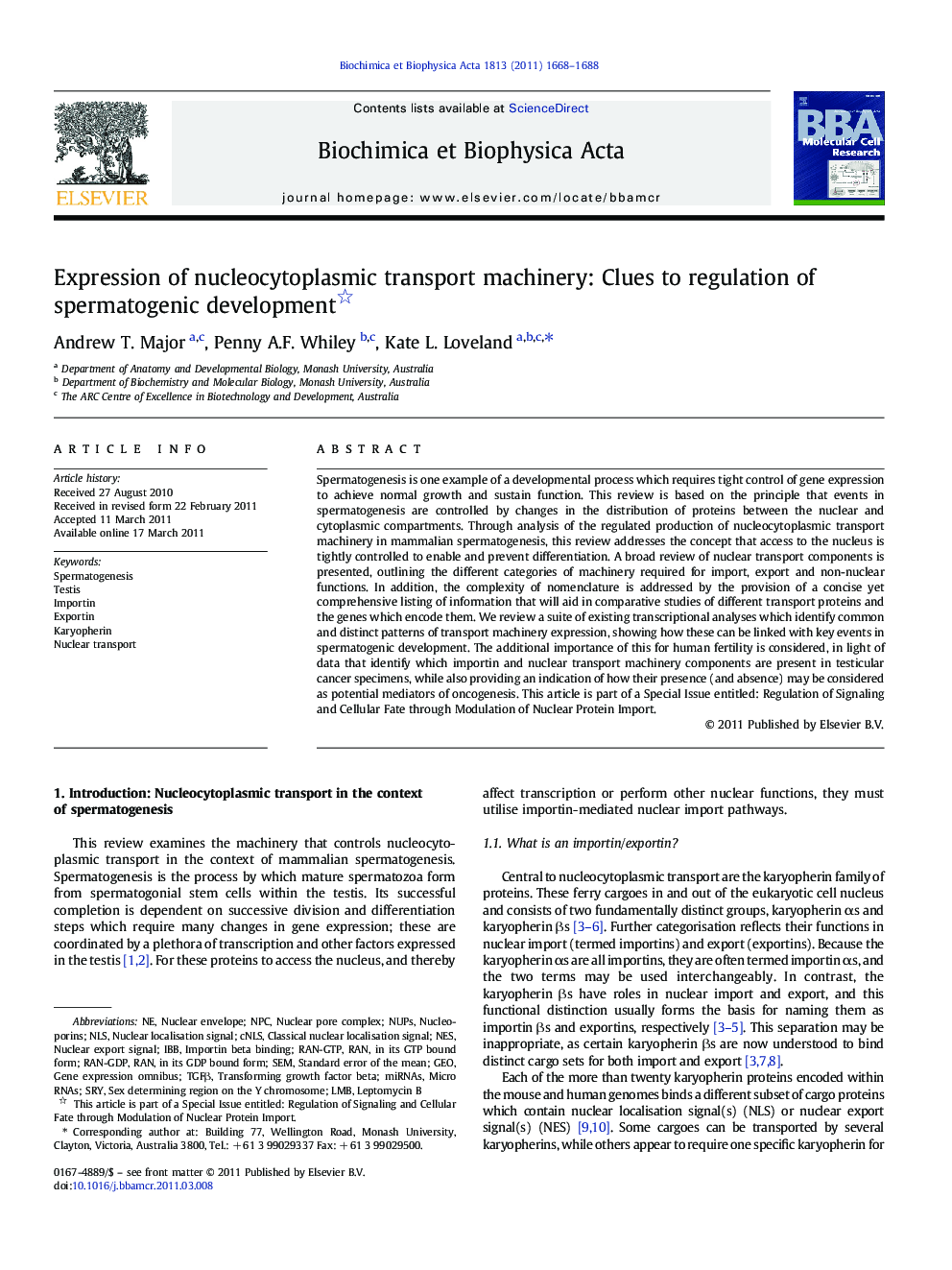| Article ID | Journal | Published Year | Pages | File Type |
|---|---|---|---|---|
| 1950819 | Biochimica et Biophysica Acta (BBA) - Molecular Cell Research | 2011 | 21 Pages |
Spermatogenesis is one example of a developmental process which requires tight control of gene expression to achieve normal growth and sustain function. This review is based on the principle that events in spermatogenesis are controlled by changes in the distribution of proteins between the nuclear and cytoplasmic compartments. Through analysis of the regulated production of nucleocytoplasmic transport machinery in mammalian spermatogenesis, this review addresses the concept that access to the nucleus is tightly controlled to enable and prevent differentiation. A broad review of nuclear transport components is presented, outlining the different categories of machinery required for import, export and non-nuclear functions. In addition, the complexity of nomenclature is addressed by the provision of a concise yet comprehensive listing of information that will aid in comparative studies of different transport proteins and the genes which encode them. We review a suite of existing transcriptional analyses which identify common and distinct patterns of transport machinery expression, showing how these can be linked with key events in spermatogenic development. The additional importance of this for human fertility is considered, in light of data that identify which importin and nuclear transport machinery components are present in testicular cancer specimens, while also providing an indication of how their presence (and absence) may be considered as potential mediators of oncogenesis. This article is part of a Special Issue entitled: Regulation of Signaling and Cellular Fate through Modulation of Nuclear Protein Import.
Reasearch highlights► Nucleocytoplasmic transport machinery synthesis is regulated during spermatogenesis. ► Particular nucleocyotoplasmic transport machinery is differentially produced as testis cancer progresses. ► The role of regulated nuclear access in development can be tested with existing databases.
